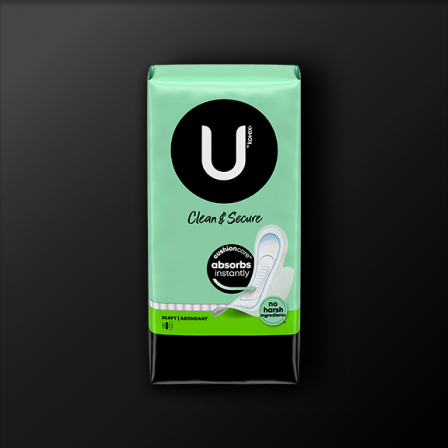Understanding Vaginal Discharge with Tips from an OB/GYN
Understanding Vaginal Discharge with Tips from an OB/GYN
By Dr. Staci Tanouye OB/GYN, MDAre you curious about vaginal discharge and wondering if it’s normal or not? The good news, it’s completely normal and healthy. In fact, vaginal discharge can play an important role in women's overall vaginal health and can be a great indicator of any hormone fluxes or changes that your body is going through. Getting to know your normal and what to expect around a period can be really helpful when trying to understand your body better.
Let’s start with the basics.
What is the purpose of discharge?
Vaginal discharge is the body’s natural self-cleaning process. It’s a mixture of cervical and vaginal secretions, mucous, and natural exfoliation of cells from the vaginal lining. It also maintains vaginal moisture. Anywhere from 1 to 5 ml of discharge daily is normal. This can vary person to person and within the same person during different times of your cycle or life. The thickness and amount can vary depending on what phase of your menstrual cycle that you’re in. It is important to pay attention to its color and consistency for signs of anything abnormal. White to clear discharge that is watery to stretchy in consistency is a normal part of a menstrual cycle. If you start to experience abnormalities in color, consistency, the amount of discharge or experiencing discomfort like itching, it’s important to consult with a trusted healthcare provider.
Discharge Colors and What They Mean:
- Clear:
- White:
- Brown:
- Spotting: When women are first experiencing a period, it’s normal to experience spotting while your body determines its regular cycle. Spotting, or very light bleeding, is also common at the very beginning or end of your period when your flow is lighter and slower. If you are sexually active and are consistently spotting or if you are pregnant, I recommend consulting with a healthcare provider.
- Yellow or Green: A green or yellow discharge, especially when it’s thick, chunky, or accompanied by an unpleasant odor should be looked at by a healthcare provider to rule out any infections or sexually transmitted diseases.
- Pink Hue:
Clear discharge that is watery is normal and can occur at any time during the month; discharge that is more mucous-like, stretchy and similar to egg whites is a sign of ovulation and is also normal.
Some white discharge, especially around the time of a menstrual cycle, is normal. Any abnormal changes in thickness, discomfort or itching, however, should be checked out by a doctor for potential indications of a yeast infection.
Brown discharge, especially at the end of your cycle, is typically normal. As your period becomes lighter and slower, it’s exposed to oxygen longer and therefore turns a brown color.
Pink discharge between periods is caused by a small amount of blood being expelled by the body and mixing with your cervical fluid to give it the pinkish look. If this is consistent, please seek advice from a health care provider.
Remember, most women don’t need to do anything special about their discharge. For the heavier days, avoiding tight clothing and wearing cotton underwear are great options. Another great option, is opting to wear a liner, like the U by Kotex® Barely There Liner.
Certain activities such as exercising can lead to heavier discharge during or following a workout due to an increase in intra-abdominal pressure and change in the angle of pelvis as well as mixing with sweat. This can vary by person and by activity. Discharge can also increase before or after your period as your body undergoes hormonal changes.
Additional factors that can cause an increase or change your vaginal discharge include:
- Ovulation
- Pregnancy
- Stress
- Sexual arousal
- Drugs that contain hormones, such as contraceptives
- Breastfeeding
Experiencing vaginal discharge before you’ve had your first period? This is completely natural and just means that your hormone levels are changing as your body is getting ready for your first period.
Vaginal discharge can also change slightly during the menstrual cycle. The vagina’s pH or acidity level changes with hormonal fluctuations. This affects the vagina’s "natural environment" and may make secretions more abundant, whiter, denser, and so on.
Once vaginal discharge begins, it remains in varying amounts for the rest of your life.
Tips To Keeping Discharge Normal:
- Avoid putting irritants such as perfumes or powders in the genital area
- Keep your vulva and vagina clean and dry
- Avoid tight pants that limit oxygen flow
- Change your period products tampons, pads and liners frequently
- If you have diabetes, keep blood glucose (blood sugar) under control to prevent a buildup of yeast from increased glucose
- Use condoms to avoid contracting or transmitting an STD
- Wear cotton underwear to increase breathability and reduce sweating in your vaginal area
- Avoid wearing period products when they are not needed
- Avoid douching or washing inside your vagina
- Wipe your vagina from front to back. This prevents bacteria from your rectum from getting into your vagina
Discharge is a normal bodily fluid and is nothing to be embarrassed about. Staying in tune with any changes to your discharge can help you determine the status of your vaginal health. Always speak to a healthcare professional if you feel that something isn’t right with your discharge. Now that you know what discharge is, it’s time to embrace it and normalize that this is a common bodily occurrence that all women experience.
Sources Referenced:







